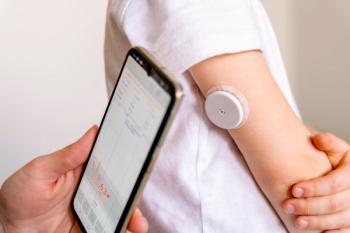
Disparities in HIV PrEP Use Among Gay and Bisexual Men
Less than 10% of young gay, bisexual, and other men who have sex with men have used HIV pre-exposure prophylaxis.
A new report on pre-exposure prophylaxis (PrEP) revealed low awareness and uptake among young gay, bisexual, and other men who have sex with men (YMSM), according to the
Through a partnership between APLA Health and the California HIV/AIDS Research Program (CHRP), researchers examined the results from a statewide survey that included more than 600 YMSM responders. Researchers examined the current levels of PrEP awareness and use, the likelihood of use, and the
The results of the study showed that about 1 in 10 of YMSM respondents in California reported using PrEP (9.6%), with a majority of respondents being PrEP naïve (90.3%). According to the University of California, Black and Latino YMSM are among the groups that have the highest risk of developing in California and across the United States.
Some key findings from the
PrEP use was also found to be significantly lower among Latinos compared to whites. A majority of YMSM study participants (55.9%) reported that they were highly likely to use PrEP if it were available to them, and they showed favorable attitude to treatment.
Despite this, more than half of participants did not know where to go to get a PrEP prescription, or how to find a physician who could write a PrEP prescription. Blacks and Latinos were significantly more likely to lack the knowledge compared to whites.
The last key finding was that YMSM were concerned about the safety, efficacy, and cost of PrEP. There were 63.4% of respondents who were concerned about PrEP’s side effects, and 58.4% concerned that PrEP was only partially effective. More than half of participants felt they would not be able to afford PrEP.
“These results clearly show that young gay and bisexual men are interested in taking PrEP if they know about it and can easily access it,” said Craig E. Thompson, chief executive officer of APLA Health. “But we must eliminate social and structural barriers to this highly effective HIV prevention tool. APLA Health is proud to take a leadership role in making sure that everyone who wants or needs PrEP is able to benefit from it.”
The report listed some key recommendations to address this issue, which include creating targeted education campaigns and strategies to increase PrEP awareness and uptake, particularly among low-income, black and Latino, and non-gay-identified YMSM; access points for PrEP must be available throughout California, especially in communities of color, and provider directories should be widely publicized; PrEP navigation services tailored to the needs YMSM of color are essential, and must include screening for and enrollment in health coverage; clear and consistent information must be provided on side effects and efficacy, in regards to PrEP education; and California should use public funds to help pay for PrEP, including PrEP-related clinical ancillary services.
“PrEP has the potential to help end the HIV epidemic in California and yet too few of those most at risk for HIV — especially young gay and bisexual men of color – are accessing it,” said Dr. George Lemp, director of CHRP. “The California HIV/AIDS Research Program is pleased to have supported this important study about PrEP uptake in California.”
Newsletter
Stay informed on drug updates, treatment guidelines, and pharmacy practice trends—subscribe to Pharmacy Times for weekly clinical insights.




















































































































































































































